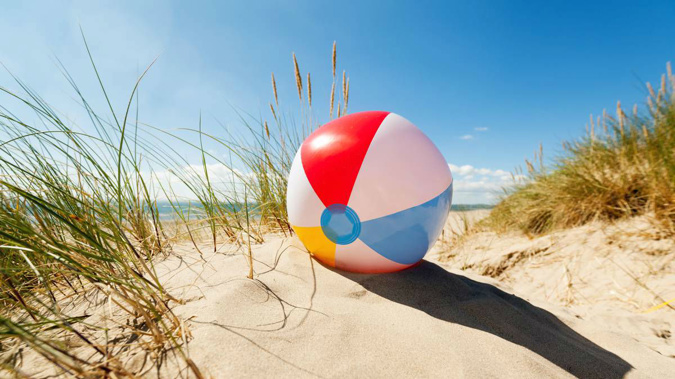
It's looking likely to be a hot, wet and sticky summer for northern parts of New Zealand - while a drier south may be the place for Kiwis to plan their Christmas getaways.
Those are the climate flavours we can expect for the next three months, a Niwa meteorologist says, with above-average air temperatures forecast everywhere.
The agency has also formally confirmed the arrival of a La Nina climate system - and warned of the potential for another marine heatwave to develop, with our coastal waters already running unusually warm.
The La Nina - an ocean-driven phenomenon that traditionally brings moisture to north, dryness to the south, and warmth to most places - could prove the strongest in nearly a decade.
Niwa's just-released outlook predicted near normal levels of rainfall in the north of the North Island - and near to below normal amounts elsewhere.
But that pattern wasn't expected to emerge immediately: November could potentially be a dry month for much of the country, before more sub-tropical patterns arrived during the December-January period.
For northern places like Auckland, it could be a damp - and muggy - holiday period.
/cloudfront-ap-southeast-2.images.arcpublishing.com/nzme/JP5KBZA3BCDEXGMREBQ4CYAJX4.jpg?width=853&height=480&mode=max) Source / Niwa
Source / Niwa
"I think we've kind of being sitting in the movie theatre and watching the previews now," Niwa forecaster Ben Noll said of the humidity currently hanging about the country.
"[Humidity] will definitely be a factor - probably more so than normal as we work our way into summer. If you have air-conditioning, you're probably going to want that for your comfort during those sleepless nights."
Noll pointed back to a period of hellish humidity that plagued Aucklanders over the record-hot summer of 2018, which was partly driven by a weak La Nina.
"Auckland's humidity was off the charts - it was like Fijian levels, and just oppressive and difficult to deal with," he said.
"I would say that we could expect a week or two of it at some point. It's going to be a bit of a rough summer for that."
Where were the prime spots for the holiday season?
Given high pressure systems were more likely to be sitting closer to the South Island around late 2020, Noll expected southern regions would be the best bet.
"Obviously, that flavour can vary from week to week. But, given our climate drivers, the dice is loaded a little more toward dryness in the south, and wetness in the north."
Elsewhere in Niwa's outlook, soil moisture levels were most likely to be below normal in the north of the North Island and the east of the South Island.
/cloudfront-ap-southeast-2.images.arcpublishing.com/nzme/AW4SBFQ6EBA5XKXOSCUAZIJMI4.jpg?width=1013&height=570&mode=max) Source / Niwa
Source / Niwa
And air pressure was forecast to be higher than normal over and to the southeast and lower than normal to the northwest of New Zealand - a set-up linked to northeasterly air flow anomalies that were a classic calling card of La Nina.
The outlook also carried the unusual caution of marine heatwave conditions.
Meteorologists have already been keeping a close watch on warming sea surface temperatures (SSTs), with some pockets reaching 3C above average.
Noll said local SSTs had warmed "quite notably" since September, with waters north of the North Island sitting at just over 1C above average.
"So that's pretty impressive. The most anomalous waters are sitting off the west coast of Auckland where, over the past seven days, SSTs have been as warm as 2C above average," he said.
"And looking further west, as you go more into the Tasman Sea, there are actually pockets of water that have been as much as 3C above average."
Sea temperatures around the South Island had also risen to between 0.5C and 0.8C above average.
"So all areas are at least a half degree above the long-term average for the month of October."
The La Nina of 2017-18 co-incided with the strongest marine heatwave ever observed around New Zealand.
It pushed SSTs to 1.5C above average - and as high as 6C above normal in some spots off the West Coast - as beaches became crowded weeks earlier than usual, and mussel beds and seaweeds around Southland and Otago suffered cascading losses.
Interestingly, Noll said, our waters were running warmer now then at this point in 2017.
Along with a La Nina, another similarity with three years ago was a positive phase of a key indicator called the Southern Annular Mode (SAM).
A positive SAM had meant weaker westerly winds than normal over the South Island with higher pressures - and fewer cold fronts crossing New Zealand with bursts of cold air.
It also blocked highs to the east of the country, while less churn of local ocean waters allowed the sea surface to warm.
"For people who work within the fisheries and marine sectors, I'd say keep a very close eye on the situation - they might even be able draw on their experiences from late 2017 and early 2018 to get a guide of this potential."
Another marine heatwave would mark the third in just four years - and these events are expected to become longer, stronger and more frequent under climate change.
Warmer seas correlated to warmer air on land - driving hot spells and the further melt of our alpine glaciers - but also to wilder weather.
Agencies have already picked a slightly more active tropical cyclone season in New Zealand's neighbourhood, with the potential for two systems to roll within 550km of the country.
Take your Radio, Podcasts and Music with you









